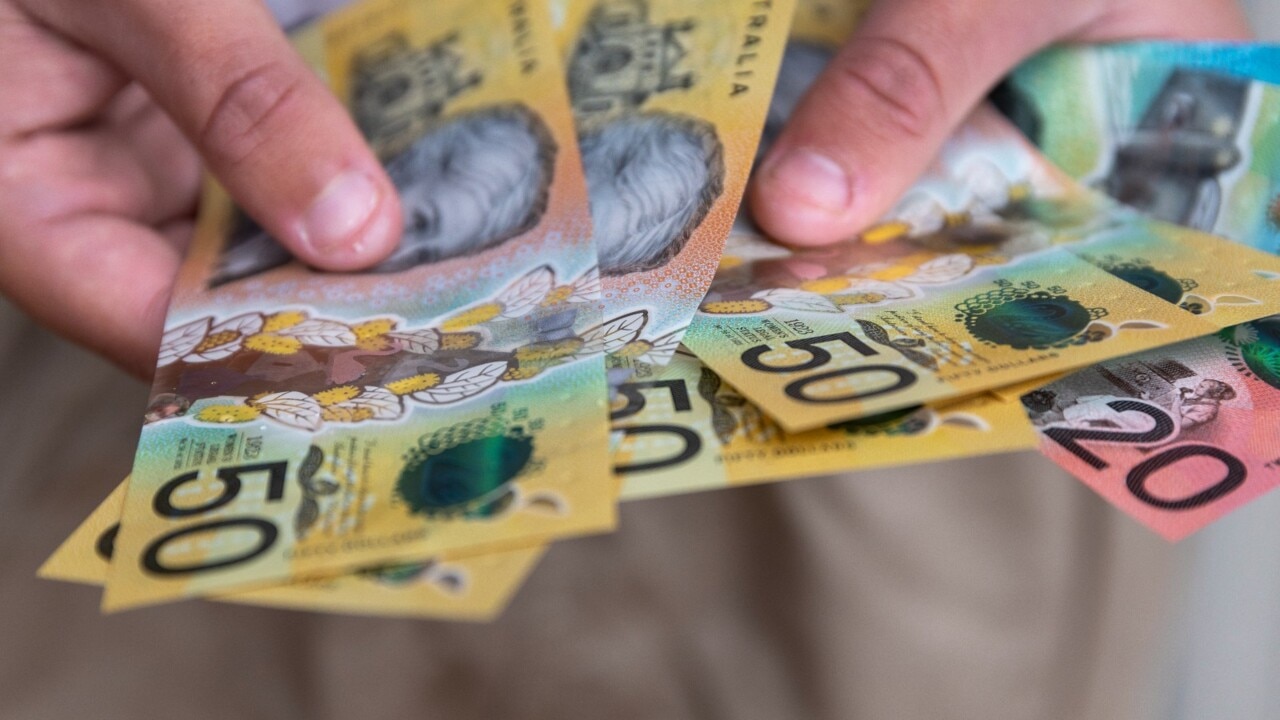Can the ASX’s strong performance continue as US inflation falls?
After lagging other developed markets this year, Australia’s benchmark index outperformed its US counterpart despite a fall in US inflation and the risk of a rate rise in Australia.

Business
Don't miss out on the headlines from Business. Followed categories will be added to My News.
It was a strong week for shares with record highs in the US, Japan and Australia as dovish comments from Federal Reserve chair Jerome Powell and lower US inflation data increased expectations of US interest rate cuts.
After lagging other developed markets this year, Australia’s benchmark share index unusually outperformed its US counterpart – despite a surprising fall in US inflation and the risk of a rate rise in Australia next month if employment holds up and progress on lowering inflation continues to stall.

The US S&P 500 fell 0.9 per cent to 5584.54 points on Thursday after hitting record highs six days in a row, yet on Friday Australia’s ASX 200 rose 0.9 per cent to a record high close of 7959.3.
This disparate performance was due to the vastly different makeup of the two markets.
The so-called Magnificent Seven tech giants, including market leader Nvidia, fell 3.5 per cent on Thursday in the US after accounting for about two-thirds of the year-to-date rise in the S&P 500.
But S&P 500 gains outnumbered losses 3.7 to 1, and the Russell 2000 Small Caps benchmark soared 3.6 per cent as investors switched to “value stocks” which will benefit more from rate cuts.
“The lower rates environment reportedly prompted rotation into smaller cap and more highly leveraged stocks, bearing in mind most of the Magnificent Seven mega caps have cash bleeding out of their ears with no need for debt,” NAB head of FX strategy Ray Atrill said.
However, the sectors with substantial weightings in the Australian market – financials, materials, healthcare and property – performed strongly in the US market on Thursday.
Much of the interest was in the banks where CBA hit a record high of $131.84 – surpassing BHP’s market value for the first time on record – and NAB hit a nine-year high of $36.98.
But there was strong interest in a range of large caps as the ASX 200 index on Friday broke above its previous record high of 7910 points that it reached on March 28.
CSL rose 1.5 per cent, Wesfarmers 1.9 per cent, Newmont 2.8 per cent, Block 3.3 per cent, and James Hardie and Charter Hall both surged 5.2 per cent.
Assuming US inflation is back on track and substantial US rate cuts but no recession is imminent, there may be a case for a further significant rotation to value and cyclical shares.
Citi expects eight US interest rate cuts from September to lower the Fed funds rate target to 3.25 to 3.5 per cent within 12 months. Smaller companies and cyclicals should benefit more from rate cuts and stronger economic growth than the tech giants.
And investors will no doubt want to keep a lot of AI exposure; from a risk-management perspective it might be a good time to diversify.
The Australian market has lagged this year because of sticky inflation and the chance of rate cuts down under, but it’s far from certain and hinges on jobs and inflation data this month.
Of course if Australia’s employment and inflation data do strengthen the chance of a rate increase and hawkish outlook from the RBA next month – or the US tech giants quickly regain their mojo during the US earnings season – the Australian market could soon go back to its underperforming ways.
So if the RBA does pull the rate rise trigger again while the Fed starts cutting, it may pay to own some stocks which benefit from a rising exchange rate and vice versa for those that could struggle.
The Aussie dollar hit a six-month high of US67.99c on Thursday but was capped by AUD/JPY selling amid suspected Bank of Japan intervention on USD/JPY to check extreme weakness in the yen.
Citi does expect the RBA to increase interest rates in August. The US bank’s Australian equity strategist, Liz Dinh, has come up with a list of large Australian stocks which historically outperform as the Aussie rises, and another list of those that have done better from a falling exchange rate.
Most of those that love a strong Aussie dollar are cyclicals like Fortescue, ALS, BHP, Rio Tinto, Downer, Seven Group, Lynas, MinRes, IGO, BlueScope Steel and Whitehaven Coal.
“Stocks that have a high positive beta to AUD/USD tend to be cyclicals, since the AUD/USD tends to fall during market turmoil and economic uncertainty, and strengthen as the economic outlook improves,” Ms Dinh said.
But while it’s hard to find a bull on CBA at these levels, the nation’s largest bank also features in Citi’s list of large ASX-listed stocks that have historically benefited from a rising AUD/USD.
“With the banks sector, historical performance has not been due to high USD exposure but our analysts offer the view that when the AUD rallies, money flows into Australia and the bank stocks due to their interest rate exposure,” Ms Dinh said.
Her list of stocks that tend to do better from a weaker exchange rate includes some top 50 stocks like CSL, Woolworths, Telstra, Transurban, Aristocrat, Cochlear, James Hardie and Brambles.
Originally published as Can the ASX’s strong performance continue as US inflation falls?



